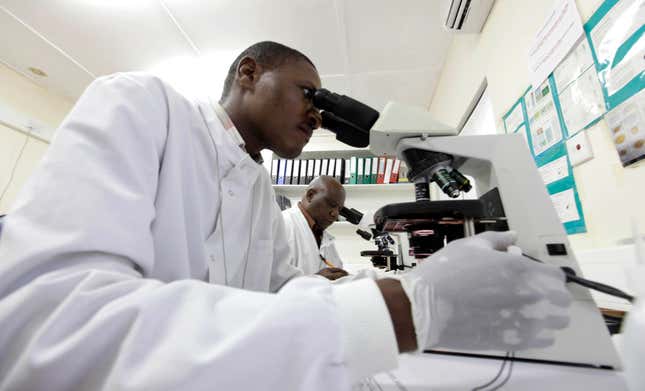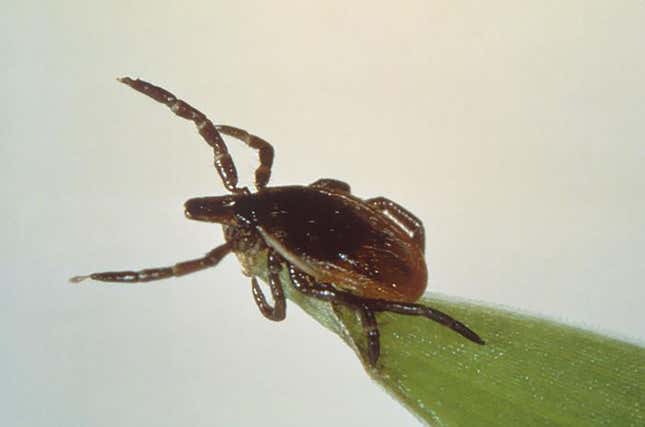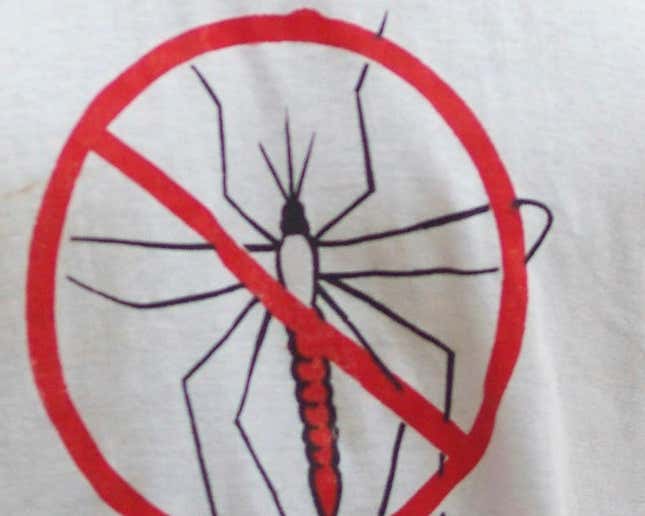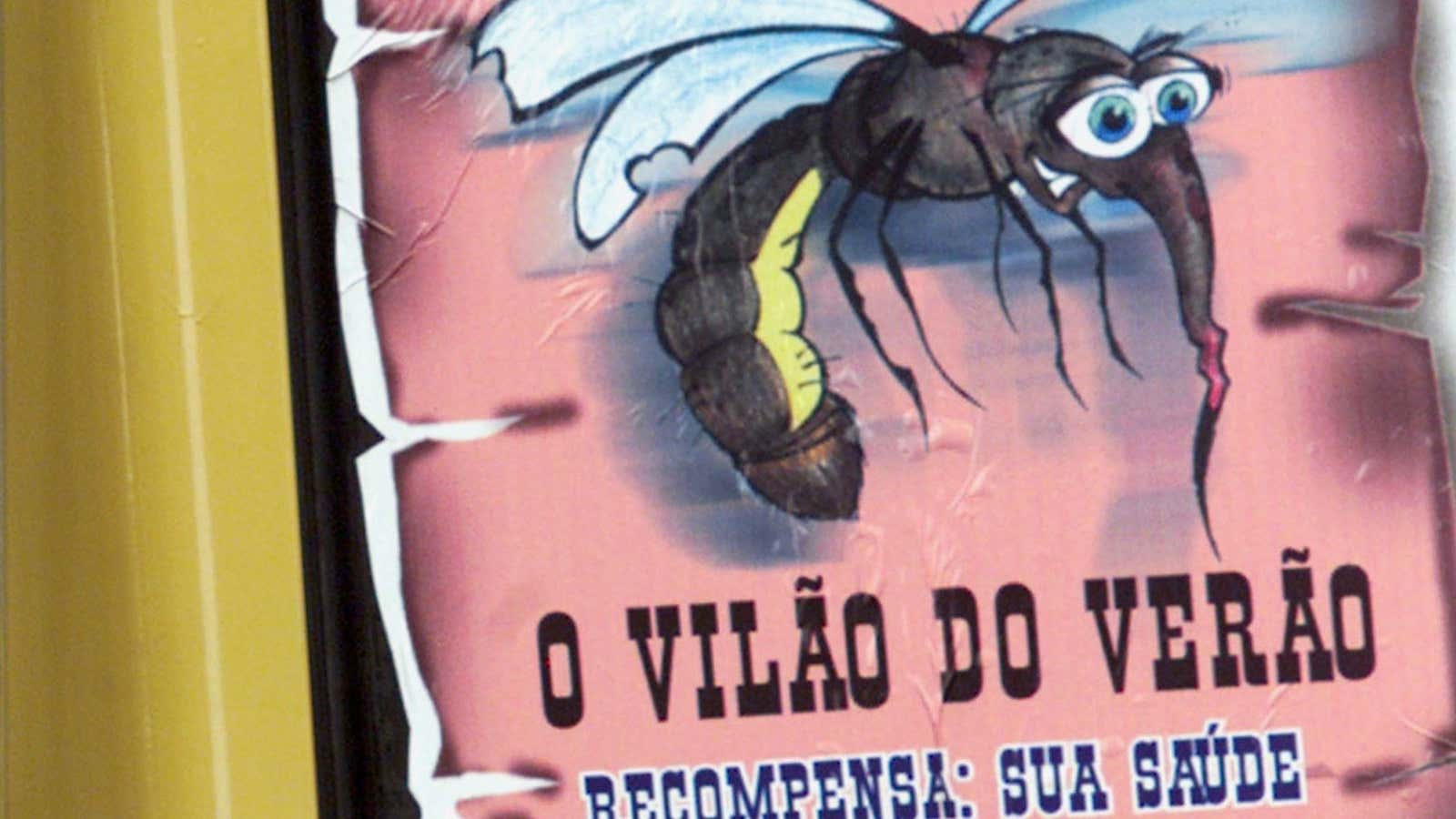Humans have been sculpting nature to our tastes on a small scale for thousands of years. Now, however, we’re contemplating change on a much bigger scale, thanks to a growing understanding of genetics.

Cultivators have throughout history bred plants deliberately to improve the chances of reproducing desired outcomes, growing bigger squash or sweeter strawberries, say, by cross-breeding certain varieties that yield new and improved seeds. Farmers have also selectively bred animals for various traits, for example crafting sheep that grow longer hair to make better wool. Those efforts changed nature but they were slow and concentrated attempts.
Today, scientists are considering transforming nature at an unprecedented level. The gene-editing technology CRISPR allows scientists to cut and paste snips of DNA, making it possible to target highly specific aspects of a species’ genome to eliminate or enhance them. It’s also possible to spread these changes across an entire species relatively rapidly—faster than natural inheritance patterns—with deliberate gene drives, which would alter a species’ DNA over several generations.
Gene drives occur naturally in some species, like various fungi, and scientists have studied selfish genes since the 1960s. Deliberate gene drives take a natural tendency and expand on it. Instead of having about a 50% chance of being passed on to offspring, like most genes, these “selfish genes” are more likely to be inherited, even if they may be harmful to an individual or species, like causing them to become sterile.
The advent of CRISPR means using gene drives to sculpt evolution—redesigning creatures to better meet our needs by forcing biased genetic inheritance—has come much closer to reality than ever before. Arguably, scientists could redesign a species’ genetics by using CRISPR to edit DNA sequences and breed creatures with these “selfish genes” that have a higher-than-average chance of being passed on to progeny. As those selfish genes keep being passed on faster than others, the whole species could have, or not have, particular traits based on human preferences.
Theoretically, we could someday live in a world where creatures couldn’t pass diseases on to humans because they’d have certain genetic tendencies edited out of them. Mosquitoes, for example, wouldn’t carry malaria. Realistically, however, there are dangers, and one of the major and widely acknowledged problems with instituting gene drives is that humanity can’t accurately calculate in advance what will happen when we start tinkering with nature on this scale. And there are plenty of reasons to be wary.
Given the interconnectedness of ecological systems and the high probability that we can’t predict all possible consequences of such actions, gene drives are unlike other scientific efforts to eradicate disease, which target individual humans rather than reshaping the DNA of a species that carries disease. They offer dramatic improvements but could also lead to devastating consequences. Add the fact that creatures don’t respect national borders and gene drives become a regulatory nightmare. Basically, humanity has to agree on how to proceed before moving forward. International standards have to be developed, countries have to pass laws in accord with those standards, and communities where the gene drives will be initiated must consent to any proposed scientific efforts.
Underlying this issue of consent is a profound question that no one is in a position to answer yet. How do we—humanity generally and the specific individuals involved in and affected by a deliberate change—agree to a process with consequences that aren’t yet fully understood, the risks of which it may be impossible to calculate?
Some scientists have argued that we tamper with nature all the time—we apply pesticides, for example, we drain swamps—and that gene drives are a “more elegant way of interacting with nature than anything we do now.”
Still, communities that would be affected by these efforts have expressed serious reservations. ”In Africa we are all potentially affected and we do not want to be lab rats for this exterminator technology,” Mariann Bassey-Orovwuje, chair of the Alliance for Food Sovereignty in Africa, said in a statement after a UN conference on biological diversity in Egypt last November. “Farmers have already marched in the streets of Burkina Faso to protest genetically engineered mosquitoes and we will march again if they ignore this UN decision. We are giving notice now that potentially affected West African communities have not given their consent or approval to this risky technology.”
The scientists who support gene drives, and the communities their work will affect, both have valid points.
Saving lives
To understand the promise, controversy, and complexity of gene drives, let’s consider a single possible use case—sculpting evolution in three species of mosquitoes to eliminate the deadly disease malaria. This mosquito-borne disease kills a child every 30 seconds of every day, according to UNICEF (pdf). Every year, 300 to 600 million suffer from the disease, mostly in Sub-Saharan Africa, and about 1 million people die from it. But if mosquito DNA could be altered to not carry the disease-causing parasite, theoretically, this deadly illness could be eradicated altogether, and experts are already working on this.
Target Malaria, a project funded in part by the Bill and Melinda Gates Foundation, is one high-profile initiative to use gene drives to eliminate the disease. And it is a prime example of how complicated these efforts are. It brings together researchers, regulators, stakeholders, and communities in Europe, North America, and Africa to think through all aspects of an extremely complex proposition that’s also potentially very promising.

Take the considerations of this one project’s science teams alone and you’ll start to see just how intense the work ahead is if gene drives are to be implemented. The scientists need to determine how to best modify genes and insert them into mosquitoes carrying malaria, study local mosquito and human populations, and determine how the technology may be deployed if their research is successful.
Then, there are all the other concerns, like local and international regulation, long-term consequences, the ethics of these efforts, and how affected communities and the wider public feel about tampering with the ecology. There has to be widespread agreement about and understanding of such a major project because the consequences won’t necessarily be limited to the specific community where it takes place.
Secrecy and persuasion
Not everyone is totally sold on this notion, and the Gates Foundation is aware of that. It spent $1.6 million in a secret advocacy effort to “fight back” against those who want to halt development of gene drive experiments until the tool is better understood. A 2017 Freedom of Information Act request published on SynthBio revealed that the foundation paid a private agriculture and biotechnology PR firm, Emerging Ag, to influence experts involved in a United Nations online forum on synthetic biology that discussed concerns about gene drives. The foundation hopes to coax stakeholders into seeing the upsides and emphasizes their promise.
Some involved in gene drive research envision its use in much more than disease prevention. The US Defense Advanced Research Projects Agency (DARPA) is funding gene drive development, for example. The agency calls its research program “Safe Genes” and its website explains that it seeks to “protect warfighters and the homeland against intentional or accidental misuse of genome editing technologies; prevent and/or reverse unwanted genetic changes in a given biological system; and facilitate the development of safe, precise, and effective medical treatments that use gene editors.”
But as SynthBio’s document requests reveal, DARPA hasn’t been totally straightforward about its involvement in this technology’s development. It has given approximately $100 million for gene drive research, $35 million more than was previously reported, making the US military “likely the largest single funder of gene drive research on the planet.”
In 2017, the Intelligence Advanced Research Projects Agency (IARPA) also sought to work with scientists. In an exchange among academics involved in gene drive research at North Carolina State University, Todd Kuiken, a senior research scholar at the school’s Genetic Engineering and Society Center, hinted at why that might be troubling, writing, “I do not know IARPA that well. My limited understanding is that its basically the intelligence agencies version of DARPA, which may be more frightening!”
The same tools that can be used for good could theoretically be used for ill, too, which is just one reason to be cautious about developing gene drive technology. And even if everyone involved in its development now has the best possible intentions, that doesn’t necessarily mean the knowledge will always be confined to or used by those who do.
Secret efforts like these, should they become public, might have an effect opposite of what the organizations intended—they might make people even more wary of gene drives and their proponents.
Thinking through the issues
There is a lot that is not known about what will happen when gene drives are implemented. That prompted the US National Institutes of Health to request a comprehensive assessment of the technology, process, considerations, and consequences of such efforts from the National Academies of Sciences, Engineering, and Medicine (NASEM), a consortium of private, nonprofit institutions that provide the government with expert advice to help shape policy.
The NASEM committee convened to examine the state of gene drive systems and the ethical questions they raise. “A major recommendation of the NASEM report is that there is insufficient evidence at this time to support release of gene-drive modified organisms into the environment,” writes evolutionary ecologist James Collins of the University of Arizona in a 2018 paper summarizing the committee’s findings in BioMed Central Proceedings. “Importantly, the committee also recognized that the potential benefits of gene drives for basic and applied research are significant and justify proceeding with laboratory research and controlled field trials.”
In other words, it’s fine to experiment with gene drives in scientific research but we don’t know enough yet to assert that this is a safe way to address major problems like malaria.
Other groups of experts have reached similar conclusions. At a UN conference on biodiversity in Egypt (paywall) last November, government representatives with expertise in science from 200 countries agreed that any field tests could only proceed if it can be proven that re-engineered organisms pose no hazard and if people who live in an area affected by an experiment provide “free, prior and informed consent.” But the agreement didn’t specify how exactly these standards would be established.
Basically, everyone theoretically agrees that gene drive experiments can only be used if they are safe and that communities have to understand the science, process, and goals involved before they can consent to prospective projects. But the devil is in the details and the details haven’t been worked out yet, which means there’s still no agreement on how to go about engaging with communities and how groups involved in a project can prove they are acting with permission if affected community members agree to proceed.
Kevin Esvelt, a molecular biologist who directs the “sculpting evolution” group at MIT Media Lab, is working on obtaining consent from communities in Massachusetts for an experiment he has planned that could eradicate Lyme disease. He argues that gene drive technology can solve ecological problems “using the language of nature.” In his view, this tool is risky but less so than alternatives. “Better that we use DNA than potentially inhumane pesticides,” he told the Washington Post (paywall) regarding concerns expressed at the biodiversity conference in Egypt.
“Better” may be in the eye of the beholder, however.
“A cost to doing nothing”
Lyme disease is carried in ticks and transferred to deer populations and humans. But it originates in white-footed mice who carry the Lyme bacteria in their blood. By injecting lab mice with Lyme bacteria that makes them immune to the disease, and then integrating the immune populations into the wild where they will mate and “drive” the Lyme bacteria out over time through reproduction, Esvelt hopes that ticks no longer afflict humans with the disease.

Esvelt works closely with the communities in Massachusetts, on Martha’s Vineyard and Nantucket, islands where the experimentation will take place someday (if finally approved). He sees himself as both a researcher and an educator and wants the public involved in thinking through the issues. To this end, he has held meetings on the islands, where he can explain the science and speak to community members about their concerns and he says that there is support for his proposal.
Along with his colleagues, Esvelt hopes to release about 1,000 genetically-modified mice onto an island to test the effects. But it will be a while yet since he still has to get regulatory approval for the experiment, which he predicts will take at least eight years before any altered mice are released.
Esvelt acknowledges that there are risks but thinks these are outweighed by the potential benefits. “There’s always a cost to doing nothing, and we need technology not just to keep the world running, but also to make it better,” he told CNN last year.
The value of models
However, there is always the possibility that messing with ecological systems won’t make the world better. Even if a gene drive has a desired result, it could lead to unanticipated trouble elsewhere. Esvelt’s own work modeling outcomes based on “existing empirical data” on genetic inheritance has shown that a gene drive intended to alter an invasive species in one place has a high risk of altering the species even in places where it’s not invasive. “Even the least effective [gene drive] systems reported to date are highly invasive, Esvelt and his colleagues wrote in bioRxiv, a biology preprint server where researchers publish work ahead of peer review. “Highly effective drive systems are predicted to be even more invasive.”

Basically, the better scientists get at using CRISPR, targeting specific genes, and creating drives, the more dangerous the effects could be. Not only could gene drives ending up being too effective in a targeted species, extending beyond the specific location where it is invasive to places where the same species isn’t problematic, the alteration of one type of creature could have consequences on countless other living things.
There is not yet enough information to determine how gene drives will actually work in the wild. Scientists can only make educated guesses. Right now, they are guessing that they aren’t sure. The NASEM report noted that gene drive research must be contained to experimental efforts and not released in the wild precisely because the data available now isn’t sufficient to determine what will happen. At this point, it’s only safe to say that we know we don’t know enough.
The flora and fauna of an ecosystem are inextricably intertwined. Messing with a species could, and likely would, have effects on other species—maybe there are reasons that white mice carry certain bacteria, reasons which might not become fully apparent until that bacteria is no longer carried by the mice. As Collins points out in his review of the NASEM findings, “Because global gene drives will spread throughout all populations of a species connected by gene flow and persist, gene drive-modified organisms hold the potential for yielding great benefits or harmful ecological change.”
You might argue that ecosystems change all the time, and that’s true. But the results are not always positive. The introduction of a new species into a particular environment can do severe damage—just ask the Florida Fish and Wildlife Commission, which has been struggling with a growing number of invasive snakes in the Everglades. In the 1980s, a small number of pet Burmese pythons were released into the Florida wilderness and have since proliferated, preying on populations of birds and mammals, including endangered native creatures. In April, local snake hunters captured a 17-foot long pregnant python with 73 eggs, the biggest such creature found in the region so far. The find is just more evidence—beyond the damage done to native species—of how a seemingly small change to an ecosystem can lead to dramatic long-term effects.
A gene drive won’t introduce a whole new species to an environment, but it will change aspects of affected species—in the case of malaria-carrying mosquitoes possibly driving them to extinction. And that, too, could have cascading effects, as NASEM and many environmentalists have noted.
Esvelt is working on methods to limit gene drives, making it possible to contain or reverse DNA changes, limiting their effects to just a few generations with “daisy drives.” He describes these as “a self-exhausting form of drive system that uses up critical genetic fuel until it stops.” Based on mathematical models, he believes these “built-in and tunable” limitations prevent genetic effects from spreading beyond a limited, pre-determined geographic area, so their effects would be local and temporary. “Absent further intervention, a population affected by a daisy drive system would eventually return to its original state,” he writes in a 2017 post on Medium, explaining:
Importantly, daisy drives might one day be safely tested in the field without risking unintended spread, yet efficiently scaled up to affect large polities without needing to release large numbers of organisms. In short, daisy drive systems could allow local communities to follow the two main rules of engineering complex systems: make the smallest possible change capable of solving the problem, and start small before scaling up.
Still, Esvelt speculates about the efficacy of daisy drives based on models. No one has tested them in the wild yet, and no one will, legally, for some time to come because there is so much uncertainty surrounding gene drives.
Avoiding disaster
No two gene drives will ever be alike because no two ecosystems are ever exactly identical, and how a drive evolves in a particular affected species will vary from species to species. The NASEM committee, in its recommendations to the government, which will craft the policies that allow this work, outlined specific steps for researchers to take before embarking on a potential project and assessing risk for any given endeavor. They must trace cause-and-effect pathways; identify sources of uncertainty; quantify the probability of the outcomes; incorporate concerns of relevant publics; compare benefits and harms; and compare alternative approaches.
This list makes the process sound deceptively simple. It may be impossible to determine in advance what causes a certain effect as we humans aren’t entirely fluent in “the language of nature.” A constant source of uncertainty will always be the fact that we don’t quite know all the ways that species in an ecosystem are interlinked. Researchers can only make educated guesses about what can happen and nature will do her own thing regardless.
Notably, the NASEM committee emphasized the importance of comparing alternatives to gene drives when considering solutions precisely because this is a very risky business. Parties to the UN conference on biodiversity concluded the same thing. As The Economist (paywall) wrote in November, “Gene drives promise great gains and great dangers.” The publication’s recommendation regarding gene drives, based on the available evidence and lack thereof right now, was “Don’t ban. Don’t rush.” And this appears to be the general consensus among experts as well.
At this point, regulators and scientists are just figuring out a framework for research. And even a hyper-conscientious researcher like Esvelt, who wants to do the right thing and doesn’t mind admitting when he’s done wrong, can fail to take all the necessary steps outlined by NASEM, though he is a proponent of those steps.
In 2017, for example, Esvelt wrote a post on Medium taking responsibility for “mistakes” and attempting to make “amends” for failing to allow Maori partners in New Zealand, with whom he had discussed the potential of gene drives to protect natural resources from invasive species, to work on revisions in a paper he published in Responsive Science. Even as he was advocating for community involvement in decision-making, he ignored the fact that the indigenous population might want to contribute their views to his paper. “It was inexcusably wrong of me to publish…without thinking to invite my new Māori partners to offer suggestions during the revision stage,” he admitted. “Acknowledging mistakes is painful, but honesty requires it: better that we publicly admit wrongdoing and strengthen our resolve than continue to do wrong.”
Proceed with caution
Maybe it is a good idea to change the DNA of malaria-carrying mosquitoes. But if it isn’t, we could only find out when it’s too late. Before gene drives can move beyond the lab, there has to be a rethinking of existing governance mechanisms. NASEM concluded that the current framework for considering the ethics and issues of experiments is “inadequate.” Collins writes, “They do not consider gene drives’ intentional spread and potential irreversible effects on ecosystems.”

In order to approach any such project ethically and as safely as possible, regulators have to make new rules nationally, and they must be aware of all the international implications and relevant regulations. “As we think about moving gene drive research into the future, the challenge is integrating the scientific freedom that allows research to move ahead with acting responsibly and conducting research that embraces ethical, legal, and larger societal values,” Collins concludes.
That is, of course, easier said than done. When a solution to a problem could have consequences far beyond the place where the issue originates, reaching consensus could be an impossibility. And it may well be that some problems shouldn’t be solved with a given new technology, if only because we don’t know how to accurately calculate the impact.
In 2016, a coalition of more than 160 civil society organizations across six continents called for a moratorium on gene drives for precisely this reason. “We lack the knowledge and understanding to release gene drives into the environment—we don’t even know what questions to ask,” said Ricarda Steinbrecher, representing the Federation of German Scientists. “It is essential that we pause, to allow the scientific community, local communities and society at large to debate and reflect.”
Esvelt agrees with the critics all while he develops his experiments. He has continually called for more reflection and believes we should question the work that he and other scientists around the world are doing. And when it comes to gene drives, concerns abound, even among enthusiasts. As he told The New Yorker (paywall) in 2016, “My greatest fear is that something terrible will happen before something wonderful happens. It keeps me up at night more than I would like to admit.”
Should This Exist? is a podcast, hosted by Caterina Fake, that debates how emerging technologies will impact humanity. Listen here for a more in-depth conversation on evaluating the human side of technology.
